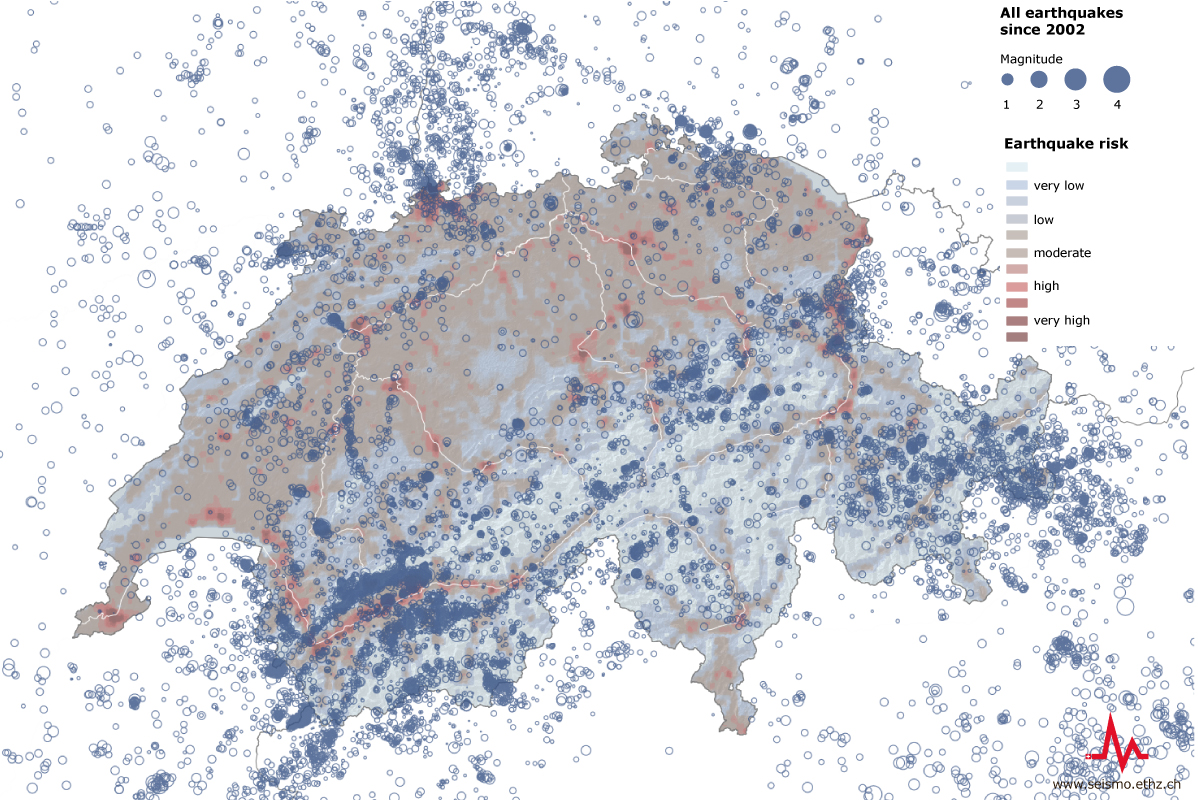2024-12-13
Swiss federal government defines new priorities for earthquake mitigation
The federal government is further strengthening measures to protect against earthquakes in Switzerland. At its meeting on 13 December 2024, the Federal Council adopted the updated federal action plan for earthquake risk management for the years 2025 to 2028. The Swiss Seismological Service (SED) at ETH Zurich will continue to operate the seismic measurement network and issue warnings in the event of an incident. One of the priorities for the next four years will be to further develop the earthquake risk model and to update the national earthquake hazard model. The SED will also help to implement various measures resulting from the National Earthquake Mitigation Plan and to integrate the new European structural design standards into federal rules on earthquake-resistant construction.
The Federal Council also adopts dispatch on financing for earthquake damage to buildings. It proposes that building owners should contribute to the costs of covering damage to buildings in the event of an earthquake.
Updating earthquake risk and hazard
The earthquake risk model shows the possible effects of earthquakes in Switzerland, including potential damage to buildings and the associated financial and human losses. Larger earthquakes can often trigger secondary effects such as fires, soil liquefaction, mass movements or lake tsunamis. Work to integrate such secondary effects into the earthquake risk model will now begin. In addition, the impacts on infrastructures that were not previously modelled will also be taken into account in the future.
One of the key components of the earthquake risk model is the hazard model, which shows how often earthquakes might occur at particular locations and how strong the tremors are likely to be. Since the last update in 2015, the data base has expanded considerably thanks to investments in the measurement network and the thousands of additional earthquakes recorded. The calculation methods and the quality of the various model components have also improved significantly. In addition, the updated version of the hazard model will increasingly incorporate computer-aided simulations.
Further priorities for the next four years
The National Earthquake Mitigation Plan, finalised in 2024, sets out the roles of the federal government, cantons and infrastructure operators in responding to and rebuilding after a major earthquake. The measures contained in the plan (e.g. federal resource management, disaster medicine) will enhance Switzerland's resilience to other hazards as well, and are set to be implemented by 2028. As a member of the European Committee for Standardization (CEN), Switzerland will also introduce the new European structural design standards (Eurocodes) by the end of 2027. These will replace the current structural design standards of the Swiss Society of Engineers and Architects (SIA) after a transitional period.
Financing for earthquake damage to buildings
Currently, only about 15% of building owners are insured against earthquake damage. Of the cantonal building insurers, only the Canton of Zurich has a limited earthquake fund with a cover of CHF 1 billion. In 17 other cantons, cantonal building insurers are pledging funding of up to CHF 2 billion on a voluntary basis as part of the Swiss Pool for Earthquake Insurance.
Over a 100-year period, earthquakes in Switzerland can be expected to cause economic damage of CHF 11 to 44 billion to buildings and their contents alone, according to the SED's earthquake risk model of Switzerland. The risk is not evenly distributed over time, but is dominated by rare, catastrophic earthquakes that usually happen without warning.
The Federal Council proposes to cushion the financial impact on building owners, particularly those without insurance, by means of an earmarked contribution in order to enable rapid reconstruction after a damage event. It is envisaged that all building owners will contribute a maximum of 0.7% of the insured value of the building to cover damage following a severe earthquake. This could currently cover building damage of up to around CHF 22 billion. According to the earthquake risk model, this corresponds to damage that can be expected to occur within approximately 500 years.
Federal action plan for earthquake risk management
Earthquakes are the natural hazard with the greatest potential for damage in Switzerland. Accordingly, an action plan has been in place for over 20 years to ensure comprehensive earthquake risk management at the federal level. This is updated every four years and endorsed by the Federal Council.
The action plan is taken forward and implemented within the federal government's area of competence under the supervision of the Federal Coordination Centre for Earthquake Risk Mitigation, part of the Federal Office for the Environment. As the specialist agency for earthquakes, the SED makes a significant contribution to this.
For additional information
Federal Council press releases of 13 December 2024:
Erdbebenvorsorge: Bund aktualisiert sein Massnahmenprogramm (only in DE/FR/IT available)
Federal Council adopts dispatch on financing for earthquake damage to buildings
